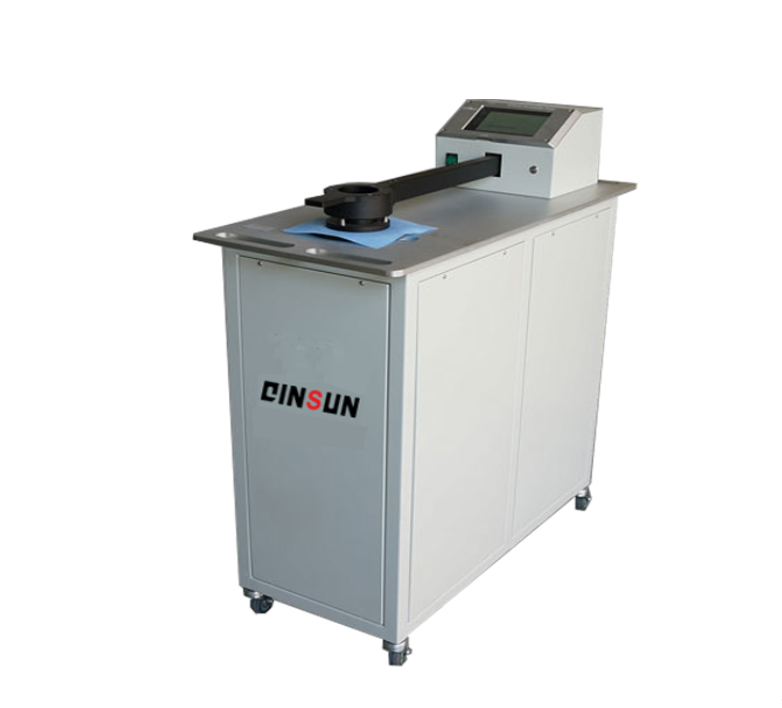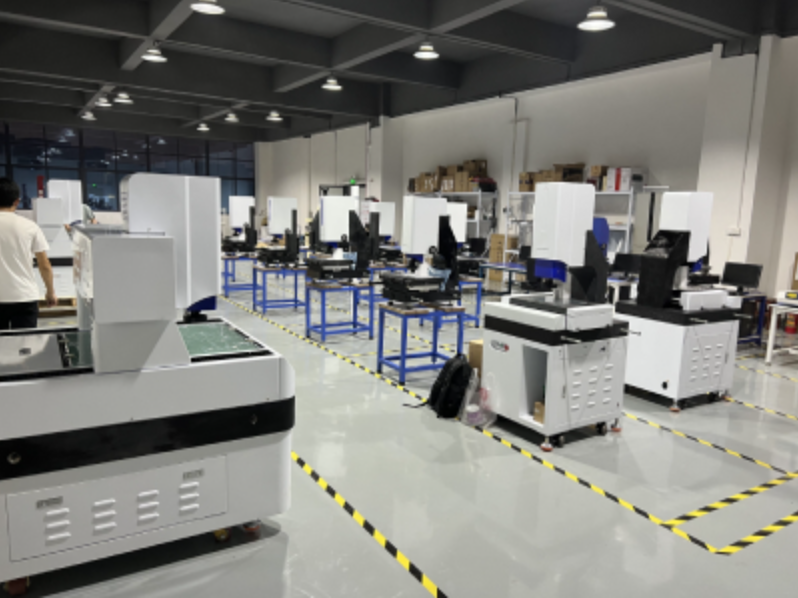Technical Principles and Applications of Textile Air Permeability Testers
The breathability of textiles is a key indicator of comfort and functionality, directly impacting the user experience of clothing, home furnishings, and industrial textiles. Air permeability is generally defined as the ability of air to pass through a unit area of fabric under specific pressure differential conditions. Testing relies on precise instruments and standardized methods. As a specialized testing device, textile air permeability testers are widely used in the textile manufacturing industry, quality inspection agencies, and research and development institutions to objectively evaluate the air permeability of various fabrics.
Currently, numerous international and domestic standards related to air permeability testing have been established, such as ASTM D737. ISO 9237. and GB/T 5453. Together, these standards form the foundational framework for evaluating fabric air permeability. This article systematically introduces the operating principles, technical parameters, standard methods, and practical applications of air permeability testers, aiming to provide a technical reference for practitioners.
Basic Pri nciple and Structure
nciple and Structure
An air permeability tester assesses a fabric's resistance to airflow by measuring the rate at which air passes through the fabric under constant pressure. Its core operating principle is based on Darcy's law or similar fluid mechanics models, which states that under laminar flow conditions, the flow rate of gas through a porous medium (such as fabric) is proportional to the pressure differential, which is closely related to the fabric's thickness and pore structure.
A typical air permeability tester consists of the following key components:
Test head: Typically available in various sizes, such as 5 cm², 20 cm², 25 cm², 38 cm², 50 cm², and 100 cm², to accommodate fabrics of varying densities and types;
Air pressure control system: Capable of precisely adjusting and maintaining a stable test pressure within a range of 10–3000 Pa;
Airflow sensing module: Responsible for detecting gas flow rate, with common units including mm/s, cm³/cm²/s, and L/m²/s;
Data acquisition and processing unit: Provides automatic calculation, multi-unit conversion, and data output;
Sample clamp: Ensures uniform tension on the fabric under test during testing to prevent side leakage or deformation from affecting the results.
When the instrument is operating, the fabric sample is tightly secured to the test head. A fan or suction pump creates negative or positive pressure on one side of the sample, allowing air to pass through the fabric from the other side. Sensors monitor airflow velocity and pressure changes in real time, ultimately calculating the air permeability using a built-in algorithm.

Key Technical Parameters and Performance Features
Modern air permeability testers generally feature high precision, full automation, and multifunctionality. Key technical specifications include:
Test Area: Supports a variety of test heads ranging from 5–100 cm², allowing users to flexibly select based on sample characteristics;
Pressure Range: Typically ranges from 10–3000 Pa, with some high-end models supporting a wider range;
Air Velocity: For example, when using a 5 cm² test head, it can range from 0.1–40.000 mm/s;
Test Time: A single test typically takes 5–50 seconds, including deceleration and stabilization phases;
Accuracy: Most devices maintain an error within ±2%, meeting laboratory-grade requirements;
Unit System: Supports both SI and Imperial units, such as mm/s, cfm, cm³/cm²/s, and L/m²/s. etc.
Communication interfaces, such as RS232C, facilitate connection to computers or laboratory information management systems (LIMS);
Automatic identification and adjustment: New equipment features automatic test head identification and pump speed adjustment, enhancing ease of operation and repeatability.
In addition, high-quality instruments are equipped with a fully enclosed airflow duct system, ensuring a leak rate of less than 0.1 L/m²/s, thus guaranteeing the reliability of test results.
Testing Standards and Compliance
Air permeability testing must strictly adhere to international, national, or industry standards to ensure the comparability and authority of test results. Common relevant standards include:
ASTM D737: American Society for Testing and Materials standard, applicable to most textile materials;
ISO 9237 and ISO 7231: International Organization for Standardization, adopted by the European Union and many other countries;
GB/T 5453: Chinese national standard, widely used for textile testing in China;
EDANA 140.2 and TAPPI T251: applicable to nonwovens and paper materials, respectively;
JIS L1096-A: Japanese Industrial Standard, commonly used in Asian markets;
DIN 53887: German standard, suitable for applications requiring high precision.
These standards provide detailed regulations on specimen preparation, environmental conditioning, test procedures, and result calculation. For example, ASTM D737 requires that the test environment be controlled under standard atmospheric conditions of 21±1°C and 65±2% relative humidity. Specimens must be fully conditioned in this environment before testing.

Test Procedure and Operation Method
Specimen Preparation and Humidity Conditioning
According to standard requirements, sampling should avoid fabric edges or areas with obvious defects. Typically, at least ten valid specimens are required. After sampling, the specimens must be equilibrated under standard atmospheric conditions for at least four hours to ensure stable humidity and temperature.
Instrument Calibration
Before formal testing, the instrument must be calibrated, typically using a standard calibration plate to confirm that the air pressure and airflow readings are within the tolerance range.
Testing Steps
Select an appropriately sized test head and install it;
Clamp the specimen flatly on the test area, ensuring there are no wrinkles or leaks;
Set the test pressure, such as 125 Pa, as commonly used in ASTM D737;
Start the test. The instrument automatically pumps air and records airflow data;
After the test, the system automatically calculates and displays the air permeability.
Result Calculation and Reporting
Air permeability is typically expressed as the volume of air permeating a unit area of fabric per unit time, for example, cm³/s/cm² or ft³/min/ft². Instruments typically feature automatic multi-unit conversion, allowing the user to select the output unit as needed. After the test is completed, the average, standard deviation, and coefficient of variation of multiple samples must be calculated, and the test conditions, instrument model, and implementation standards must be noted in the report.
Application Areas and Practical Significance
Air permeability testers are not only used for conventional textiles, but are also widely used in a variety of fields, including industrial textiles, nonwovens, medical materials, clothing, and household goods:
Apparel fabrics: Breathability directly affects wearing comfort, especially sportswear, outdoor equipment, and protective clothing, which require excellent air permeability and moisture removal capabilities.
Home textiles: For example, curtains, sofa fabrics, and bedding, breathability affects user experience and environmental hygiene.
Technical textiles: These include filter materials, coated fabrics, and composite fabrics. Breathability is closely related to their functionality.
Nonwovens and paper materials: Breathability assessment is also required for applications in hygiene products, medical packaging, and other areas.
Through systematic evaluation of fabric breathability, companies can optimize product design, improve quality control, and enhance market competitiveness.

Technological Development Trends and Outlook
As the textile industry moves toward functionalization, intelligence, and green development, air permeability testing technology continues to evolve. Future development trends include:
Instrument intelligence and automation: integrating AI algorithms to achieve automatic diagnosis, data visualization, and remote control;
Multi-parameter coupled testing: for example, simultaneously testing air permeability with comfort indicators such as moisture permeability and thermal resistance;
Miniaturization and portability: developing portable devices suitable for rapid on-site testing;
Further improvement of the standard system: Testing specifications are being established, particularly for new fiber materials, smart textiles, and bio-based materials;
Promoting green testing technologies: such as low-energy suction systems, oil-free designs, and the use of renewable materials.
As a key instrument for textile quality testing, the accuracy and reliability of textile air permeability testers are crucial for product development and quality control. With the continuous improvement of the standard system and advancement of technology, air permeability testing will play an even more important role in the textile industry. It is recommended that users should closely consider actual application requirements and strictly follow relevant standards when selecting and using equipment to obtain scientific and accurate test data, providing solid support for corporate innovation and quality improvement.
2025-09-18 16:20
- Related News
Leather Crockmeter: Principles, Applications, and Purchasing Guide
Technical Principles and Applications of Textile Air Permeability Testers
Gravel Impact Tester Test Content and Principle
360 degree water tank cleaner machine
Tile Abrasion Tester Operating Guide
STD-PH Series High Pressure Gas Sorption Analyzer
